How to Make Pancakes
Making the Perfect Pancakes from Scratch
Are your pancake making skills less than impressive? Our handy tips will show you how to make pancakes that are thick and fluffy.
Learning how to make pancakes from scratch isn’t terribly difficult. The secret is having the pan at the right temperature and knowing when to flip your pancakes.
The great thing about pancakes is that you don’t need a lot of ingredients. If you have butter, flour, sugar, eggs and milk on hand, you can whip up a batch in no time. Then it’s just a matter of adding whatever else you may have to jazz them up. This can be fresh or frozen fruit, oatmeal, chocolate chips, whole grains, cottage cheese, honey or maple syrup.
What You will need
1 large mixing bowl
Sifter or sieve
Small bowl or jug
Whisk
Wooden spoon
Spatula
Pancake griddle or frypan
Guide to Making the Perfect Pancakes from Scratch
Make sure your ingredients are fresh, particularly the raising agent. Your recipe will use either self-raising flour, or ordinary flour with baking soda or baking powder added. These lose their effectiveness over time.
Have your ingredients on hand before you begin. There’s nothing worse than being half-way through cooking a recipe, then realizing you need to dash to the shops.
Sift the flour together with the baking powder into a large bowl. This will eliminate lumpy batter.
Then stir the flour mixture with a whisk to thoroughly combine the ingredients.
If using melted butter, allow it to cool for about 5 minutes.
Add the melted butter to the other wet ingredients and stir quickly with a whisk.
Make a well in the center of the flour and slowly pour in the wet ingredients, stirring gently as you do so.
Stir with a wooden spoon until the flour is incorporated and most of the lumps have disappeared. This needs a light hand. Over-mixing results in tough, chewy pancakes. What you want are light, fluffy ones.
If, at this point, you think the batter is too dry add a little more milk.
It’s a good idea to rest your batter. This allows the starch molecules in the flour to absorb the liquid, resulting in a thicker, smoother batter. It also allows air bubbles formed during mixing to work their way out. Cover with plastic wrap and refrigerate for at least 15 to 30 minutes. When you remove the batter from the fridge, don’t stir it again.
Next prepare your griddle or pan. What is the best pan to use? You can use a skillet or frypan for this, but a griddle is probably the best. But if you don’t have a griddle don’t fret. I use a frypan and the results are just fine. Lightly grease your pan. Simply brush the pan with a small amount of oil or margarine. You only need a small amount.
Turn your pan up to about medium high heat. When the pan is hot drop about ¼ cup of the mixture onto the pan. Leave plenty of room so you can turn your pancakes.
Cook for about 1 – 3 minutes. The pancakes are ready to turn when bubbles form on top and the edges start to look dry. Flip them over with a long handled spatula. Sometimes this takes a little practice. Just leave yourself plenty of room when turning them.
Then cook for a further 1 – 2 minutes, or until golden brown. The second side won’t take as long to cook as the first, so watch them carefully.
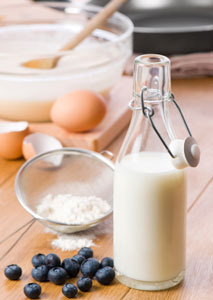
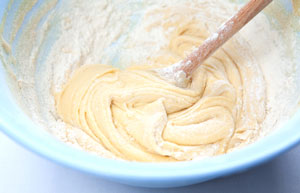
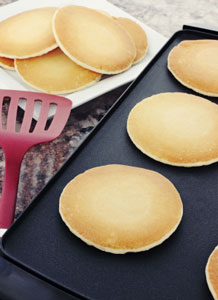
Tips
- The secret to perfect pancakes is getting the temperature of the pan right. To test the temperature of the frying pan sprinkle a few drops of cold water on it. If the water flattens, the pan is not hot enough. If it vanishes, the pan is too hot. If the drops bounce, the pan is just right.
- Cooked pancakes can be refrigerated or frozen. Simply reheat in a toaster oven or in the microwave on high for 20 – 25 seconds.
Your Pancake Problems Solved
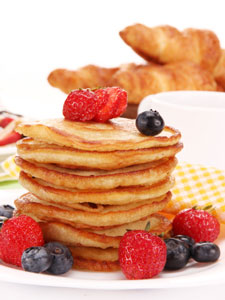
Have you followed the recipe but instead of light, golden brown pancakes you either have a floury mess or something that resembles cardboard? Here are some troubleshooting tips.
Are your pancakes flat and thin rather than high and puffy?
First check that you have read the recipe correctly and measured your ingredients correctly. Using the wrong ingredients or in the wrong amounts, particularly the raising agent, will alter the result.
Are your pancakes tough and chewy rather than soft and light?
Over working your batter or stirring too vigorously will result in tough batter. Stir gently until the flour is mixed then stop.
Mixing your batter again after letting it rest will also cause this. Once the batter has rested and the bubbles have formed, leave it be.
Did the bottoms burn?
You have the temperature too high. Lower the temperature of your pan. To get the temperature right, begin with one pancake. Then adjust the heat as necessary.
This will also happen if you have used butter to grease your pan. Butter burns very quickly, so cook your pancakes straight after greasing the pan.
Are your pancakes taking forever to cook?
Either the temperature is too low or you haven’t allowed sufficient time for your griddle to heat. This will result in over-cooked pancakes that are dry in the middle with no color.
Are your pancakes cooked on the outside but gooey in the middle?
They are under-cooked. Keep the temperature consistent and don’t turn them over until you see bubbles forming on top.
Recipes
Learning how to make pancakes perfectly sometimes requires a little trial and error to get the temperature and the timing right. Always test the pan by cooking a small amount of batter, then adjust the heat as necessary.
Happy baking
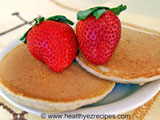
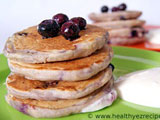
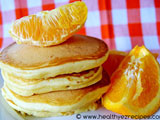
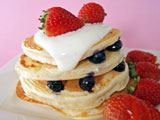
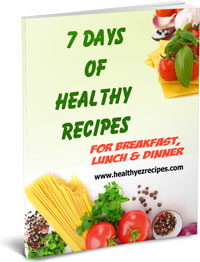
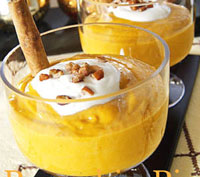
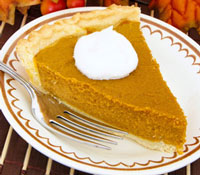
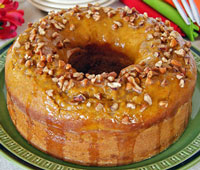
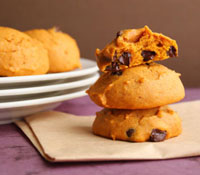
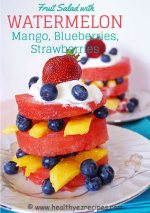
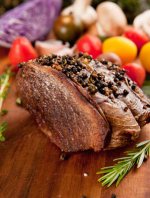
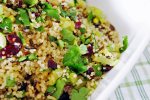
New! Comments
Have your say about what you just read! Leave me a comment in the box below.